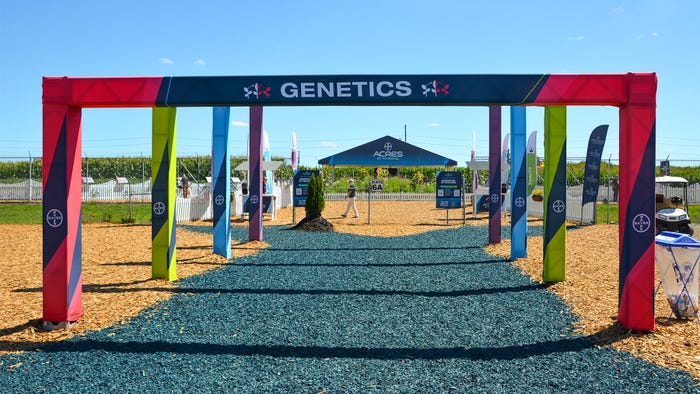
Bayer uses plots of corn and soybeans at the Farm Progress Show to showcase technological advancements over time. The walking tour through that display at this year’s show was no exception. Besides corn and soybeans, Bayer added cover crops and pollinator plants to the plots. While the overall focus was on “Acres of Potential” and Bayer’s role in unlocking that potential, several subthemes were captured on display boards, and the points were driven home through the living plots.
Here's a closer look, with more details in the accompanying slideshow:
Genetic progress in soybeans. Six different varieties released from 2020 to 2024 were grown in the soybean genetics progress plot. The 2000 variety featured the original Roundup Ready trait. The 2024 variety is an XtendFlex variety. Each variety highlighted along the way represented improvement in the trait for weed control, plus genetic improvement for yield and other traits. The variety coming in 2024 was rated at 20 bushels per acre higher than the 2000 Roundup Ready variety.
Genetic progress in corn. The first hybrid in the plot was pulled from the 1983 seed bank, with yield on dryland around 200 bushels per acre. The seventh hybrid, not yet commercially released, represented more traits for insect control and herbicide tolerance, also with more yield potential.
More weed control options. Every treatment provided good control compared to the untreated check, which showed how many weeds would take off and take over without a weed control program in soybeans. The plot demonstrated that when you apply herbicides and whether you use a residual herbicide or not can impact success in controlling weeds.
Importance of fungicides. Dry weather early held back corn diseases in 2023 early, although some developed when rains returned. Bayer touts Delaro Complete as a choice that can help keep diseases under control.
Digital farming. Bayer’s Climate Fieldview is the heart of the company’s data collection and analysis services. Bayer places high priority on making informed decisions. Data collection during field operations starts the process. If you have Climate Fieldview, it happens seamlessly while you plant, spray and harvest. Then, you have analytical tools available to help make comparisons and decisions.
About the Author(s)
You May Also Like




